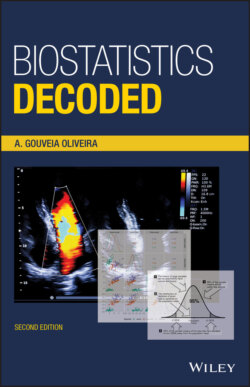Читать книгу Biostatistics Decoded - A. Gouveia Oliveira - Страница 23
1.15 The Central Limit Theorem
ОглавлениеWhat was presented in the previous section is known as the central limit theorem. This theorem simply states that the sum of a large number of independent variables with identical distribution has a normal distribution. The central limit theorem plays a major role in statistical theory, and the following experiment illustrates how the theorem operates.
With a computer, we generated random numbers between 0 and 1, obtaining observations from two continuous variables with the same distribution. The variables had a uniform probability distribution, which is a probability distribution where all values occur with exactly the same probability.
Then, we created a new variable by adding the values of those two variables and plotted a histogram of the frequency distribution of the new variable. The procedure was repeated with three, four, and five identical uniform variables. The frequency distributions of the resulting variables are presented in Figure 1.25.
Figure 1.25 Frequency distribution of sums of identical variables with uniform distribution.
Notice that the more variables we add together, the more the shape of the frequency distribution approaches the normal curve. The fit is already fair for the sum of four variables. This result is a consequence of the central limit theorem.
